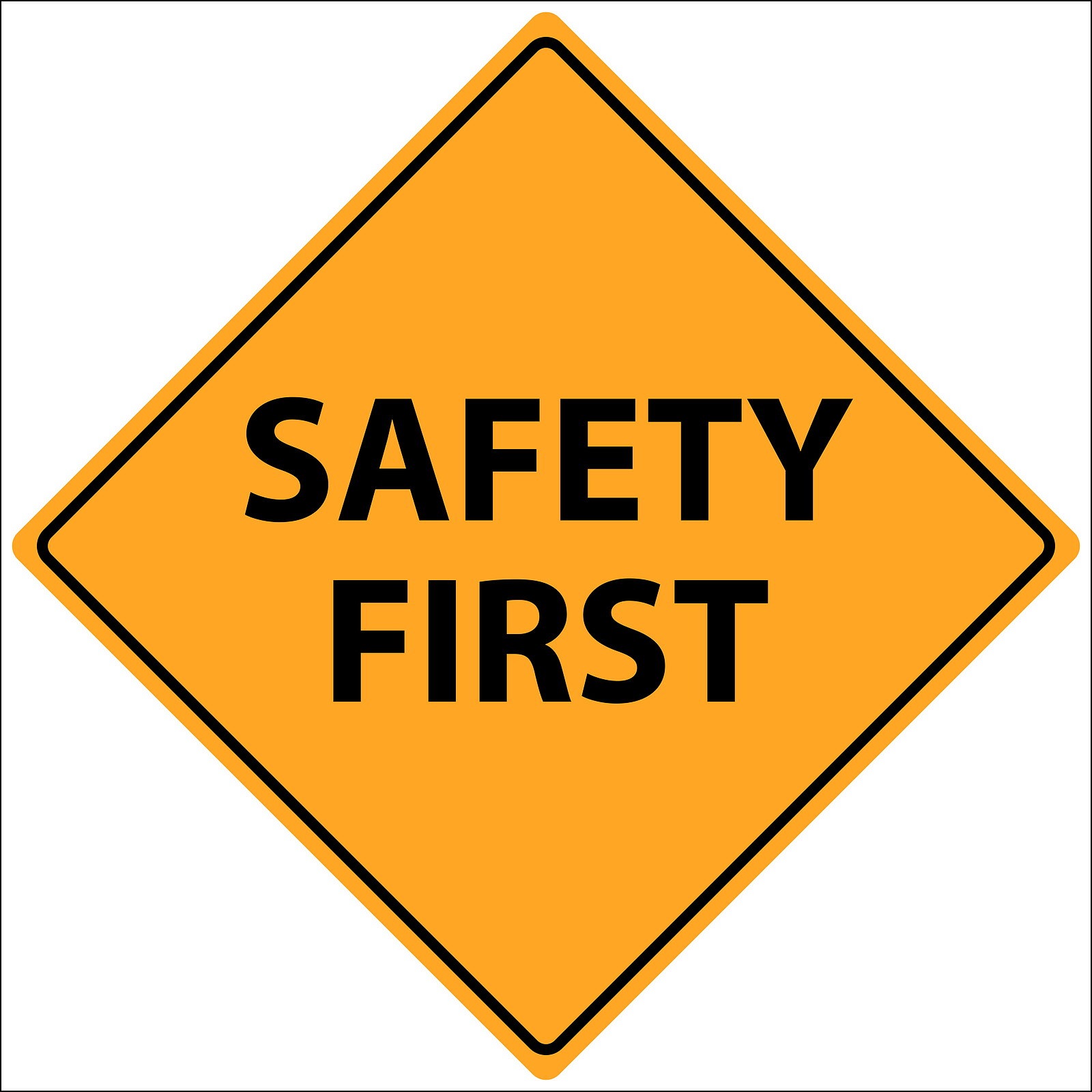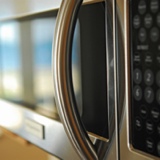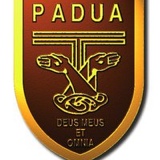Information
-
Document No.
-
Site
-
Conducted on
-
Conducted by
- Chris Howell
- Peter Franklin
BUILDING DETAILS
-
Building Class
- 1a
- 1b
- 2
- 3
- 4
- 5
- 6
- 7a
- 7b
- 8
- 9a
- 9b
- 9c
- 10a
- 10b
-
Other Building Details.
PREVIOUS AUDIT
-
Has there been a previous audit?
-
Has the last audit been reviewed?
-
Are there any outstanding issues from the previous audit?
OCCUPANCY LIMITS FOR BUILDINGS
Obligations for All Buildings
-
Have steps been taken to ensure the building is not overcrowded?<br><br> <br>Applicable Law:<br>Sections 14, 15 & 16 Building Fire Safety Regulation 2008 QLD<br> <br>Occupiers Guide:<br>• The occupier of a building must ensure that the number of persons in the building at any one time does not exceed the maximum number that may be accommodated under the Building Code of Australia, Clause D1.6 and Clause D1.13.<br>• Clause D1.6 of the Building Code of Australia outlines the required dimensions of exits and paths of travel to exits while Clause D1.13 outlines the method of calculating the number of persons which can be accommodated in a storey, room or mezzanine with consideration of the purpose for which it is used and layout of the floor area.<br>• Clause D1.13 of the Building Code of Australia refers to the amount of space a person requires in different type of buildings.<br>• A Building Certifier may give advice on the number of persons allowed by these Clauses.<br>
Obligations for At-Risk Licensed Buildings
-
If an Occupancy Notice has been issued by the Commissioner, is the building compliant?
Housekeeping
-
Is housekeeping acceptable?<br><br>Applicable Law:<br>Section 69 Fire and Rescue Services Act QLD<br> <br>Occupiers Guide:<br>• The owner/occupier must ensure there are no excessive flammable materials under buildings or stairways.<br>• It must be ensured that there are no tripping hazards such as lifting tiles and power cords in evacuation routes.<br>
RECORD KEEPING
Approval Documents
-
Are approval documents obtained and kept?<br><br> <br>Applicable Law:<br>Section 25 Building Fire Safety Regulation 2008 QLD<br> <br>Occupiers Guide:<br>• The occupier of a building must take reasonable steps to obtain the relevant approval documents for the building. The approval document means an approval document for a building development application that is relevant to a matter included in the Fire and Evacuation Plan for the building. (e.g. a list of fire safety installations for the building and required special fire services applying to the building work, or where an alternative solution is a condition of occupation or use of the building.)<br>• The approval document, or a copy of this document must be kept with the Fire and Evacuation Plan.<br>• The secondary occupier is not required to obtain or keep a relevant approval document for the part of the building if the managing entity of the building has obtained the document.<br>
-
Is the Certificate of Classification for the building displayed?<br><br>Applicable Law:<br>Section 108A Building Act 1975<br> <br>Occupiers Guide:<br>• It is the building owner’s responsibility to obtain the certificate of classification from the building certifier.<br>• This certificate must be displayed conspicuously as near as practical to the main entrance.<br>• An Authorised Officer may require the owner to produce the Certificate of Classification if not displayed.
Occupier's Statement (Annual)
-
Can an annual Occupiers Statement be produced upon request?<br><br> <br>Applicable Law:<br>Section 55A Building Fire Safety Regulation 2008 QLD<br> <br>Occupiers Guide:<br>• The occupier of a building must prepare an annual occupiers statement in compliance with the QDC, part MP6.1.<br>• Each occupier must keep a copy of each occupier statement with the record of maintenance for 2 years after the statement is prepared.<br>• The occupier must, within 10 business days after the occupier is required to prepare an occupier statement, give the commissioner a copy of the statement.
Record Security
-
Are records kept in a way that is reasonably safe from the effects of fire? (E.G- metal filing cabinet)<br><br> <br>Applicable Law:<br>Section 71, 72 & 86 Building Fire Safety Regulation 2008 QLD<br> <br>Occupiers Guide:<br>• A copy of all prescribed documents/ records must be kept in the building and reasonably safe from the effects of fire. A locked metal filing cabinet is sufficient to satisfy these requirements.<br>• The documents required to be kept include – A record of review of the Fire and Evacuation Plan, a Fire and Evacuation Instruction Record, an Evacuation Practice Record and a Record of Maintenance.<br>• These records must be kept for at least 2 years.<br>• These documents must be produced upon request of a Fire Officer.
-
Is a copy of all prescribed documents kept in another place?<br><br>Applicable Law:<br>Section 71 Building Fire Safety Regulation 2008 QLD<br> <br>Occupiers Guide:<br>• In addition to being kept in a way that is reasonably safe from the effects of fire, a copy of all records must be kept in another place. These copies may be electronic.<br>• Copies of maintenance records can be retained by the fire contractor. Other records are to be kept by the occupier.<br> <br> <br>
Fire Safety Management Plan
-
Are current Fire SafetyManagement Pland prepared and implemented?
-
Are Fire Safety Management Plans available for inspection during business hours?
-
Can evacuation practice records be produced upon request?
GENERAL COMMENTS AND SUMMARY
-
Comments:
SIGNATURE OF RESPONSIBLE PERSON CONDUCTING AUDIT
-
Add signature
SIGNATURE OF BUILDING REPRESENTATIVE
-
Add signature
Escape Routes
MEANS OF ESCAPE FROM BUILDINGS
Evacuation Routes
-
1. Are evacuation routes clear of obstructions?<br><br>Applicable Law:<br>Section 8 Building Fire Safety Regulation 2008 QLD<br> <br>Occupiers Guide:<br>• The owner/ occupier must ensure that nothing impedes or obstructs travel on the evacuation route.<br>• The regulation defines a thing that may impede or obstruct travel as a vehicle, an animal, fixtures or fittings, goods or materials. It may also include people.<br>• An evacuation route is the path a person would take to exit the building. It is usually marked with exit signage.<br>• An evacuation route includes the space above the path of travel. An evacuation route must be indicated on the evacuation diagram<br>• Evacuation routes must be a minimum of 1 metre wide.<br>• A final exit must lead directly to a road or open space and where people are safe from the effects of a fire or hazardous material emergency in the building<br>• Evacuation routes start in common areas, not inside units or classrooms, meeting rooms or individual offices. A common area is a passageway, stairway, corridor or mall.<br>
-
2. Are final exits clear of obstructions for 2 meters?<br><br>Applicable Law:<br>Section 8 Building Fire Safety Regulation 2008 QLD<br> <br>Occupiers Guide:<br>• The owner/ occupier must ensure a clear evacuation route for 2 metres outside the final exit of the building (i.e. that no thing impedes or obstructs travel for 2 metres outside the final exit).<br>• A final exit is the last exit door from the building.<br>• A final exit must lead directly to a place of safety outside the building or open space and where people are safe from the effects of fire or hazardous material emergency in the building.<br>• The regulation defines a thing that may impede or obstruct travel as a vehicle, an animal, fixtures or fittings, goods or materials. It may also include people.
-
3. Are the final exits of any adjoining properties clear?
Exit Doors
-
4. Is the door hardware the correct type?<br><br> <br>Applicable Law:<br>Sections 10-11 Building Fire Safety Regulation 2008 QLD<br> <br>Occupiers Guide:<br>• Exit doors are doors that are in the evacuation route or are doors at the final exit of the building.<br>• Exit doors must be opened by a single handed downward or pushing action on a single device.<br>• Lever type handles or panic bars are the only acceptable door hardware for exit doors.<br>• Barrel bolts etc are not illegal providing they can be locked in the open position when the building is occupied.<br>• Knob type handles are not acceptable door hardware for exit doors.<br>• Automatic opening doors that open on activation of the fire detection system are acceptable, providing if they fail they can be manually opened with a force of 110 Newtons (11 kilograms of force) or less.<br>• Sliding doors, if approved, are acceptable. The Queensland Fire & Rescue Service (QFRS) recommend that an arrow showing the direction of slide and signage indicating slide to open be attached to the door.
-
5. Are the doors along the evacuation route unlocked and unobstructed?<br><br> <br>Applicable Law:<br>Sections 10-12 Building Fire Safety Regulation 2008 QLD<br> <br>Occupiers Guide:<br>• The owner/ occupier must ensure doors on evacuation routes are not locked if people are known to be in the building.<br>• Doors on evacuation routes must be able to be opened by a single handed downward or pushing action on a single device. Knob type handles are not acceptable door hardware for these doors.<br>• The door hardware of buildings used as detention centres, mental health facilities, child care centres (including Prep and After-School Care where full-time adults are present) and secure parts of banks, are required to comply with the Building Code of Australia, Part D2.21.<br>• Where special door locking arrangements are in place the method of operation and the information provided to staff/occupants is required to be retained in the evacuation coordination procedures, which must be kept with the Fire and Evacuation Plan.<br>
Fire/Smoke Doors and Walls
-
6. Are the fire/smoke doors unobstructed and undamaged?<br><br>Applicable Law:<br>Section 13 Building Fire Safety Regulation 2008 QLD<br> <br>Occupiers Guide:<br>• The owner/ occupier must ensure that fire/smoke doors are not obstructed nor damaged.<br>• Fire or smoke doors are not to be ‘chocked’ or held open. Fire doors must automatically close and fully latch after each opening.<br>• An exception to this is when the door is held open by a device connected to the buildings fire alarm system that allows the door to close on activation of a fire alarm.
-
7. Can current maintenance records for fire/smoke doors be produced upon request?<br><br>Applicable Law:<br>QLD Development Code MP 6.1<br> <br>Occupiers Guide:<br>• A log book is required to record current inspections<br>• As of 1 Jan 2009, fire doors in Class 5, 6, 9a and 9c buildings must be inspected at 6 monthly intervals.<br>• A Class 5 building is defined as an office; Class 6 buildings include shops, hotels, service stations; Class 9a buildings are health care buildings and Class 9c are aged care buildings.<br>• Fire doors in all remaining buildings must be inspected annually.<br>• An appropriately qualified person is required to conduct the maintenance inspections (An appropriately qualified person is a person who holds a current certificate of accreditation, issued by the Fire Protection Industry Board, relating to a prescribed fire safety installation of a particular type – Refer to Section 85 of the Building Fire Safety Regulation 2008 for further definition of an appropriately qualified person).
-
8. Are fire/smoke walls free from unprotected penetration?
-
Reference: AS 1851 section 17
Evacuation Signs/Diagrams - General
-
9. Do the evacuation signs/diagrams contain the required information?<br><br> <br>Applicable Law:<br>Sections 18, 29 & 30 Building Fire Safety Regulation 2008 QLD<br> <br>Occupiers Guide:<br>• Every building must have evacuation signs/ diagrams.<br>• An evacuation sign comprises evacuation procedures and an evacuation diagram.<br>• An evacuation procedure outlines the process to follow in the event of a fire or hazardous materials emergency.<br>• Evacuation diagrams must show the following details:<br>• The place that corresponds to the place in the building where the diagram is displayed. Eg ‘You are here’ signage<br>• The route from (you are here) to the nearest exit.<br>• Each exit of the building.<br>• Any intercommunication devices in the common areas, e.g. Warden Intercommunication Points.<br>• The location of manually operated fire alarms e.g. break glass alarms.<br>• The location of any fire fighting equipment in the building e.g. fire extinguishers and hose reels.<br>• The designated assembly area outside the building.<br>• The route from each exit to the assembly area.<br> <br><br>
-
10. Are the evacuation signs/diagrams securely fastened and orientated for the building?<br><br> <br>Applicable Law:<br>Sections 18, 29 & 30 Building Fire Safety Regulation 2008 QLD<br> <br>Occupiers Guide:<br>• Evacuation signs/ diagrams must be displayed in a conspicuous position, securely attached to a wall or the internal side of a door and orientated in line with the building layout.<br>• Evacuation signs/ diagrams must be appropriately located on each evacuation route of the building.<br>• ‘Orientated’ means the diagram must be understandable to a person reading the sign and the instructions must be accurate and correspond to the building layout.<br>• All buildings apart from Class 1 and Class 10 must comply with the requirement.
Evacuation Signs - Accommodation Units
-
11. Are accommodation unit evacuation sign/s securely fastened and orientated for the building?
-
12. Do the evacuation sign/s contain the required information for the accommodation unit?
Maintenance
MAINTENANCE of FIRE SAFETY INSTALLATIONS
Exit Signs/Emergency Lighting
-
1.Are the exit signs/Emergency lighting undamaged?
-
2. Can current maintenance records for exit signs/emergency lighting be produced upon request?<br><br>Applicable Law:<br>QLD Development Code MP 6.1<br> <br>Occupiers Guide:<br>• A log book is required to record 6 monthly inspections.<br>• A licensed electrician or appropriately qualified person is required to conduct the maintenance inspections.
-
Reference AS 2293.2 sections 2&3
Fire Extinguishers
-
3. Are all fire extinguishers correctly maintained?<br><br>Applicable Law:<br>QLD Development Code MP 6.1<br> <br>Occupiers Guide:<br>• The occupier must ensure maintenance of prescribed fire extinguishers are carried out in accordance with relevant Australian Standards and by an appropriately qualified person.<br>• Prescribed fire extinguishers are those required to be installed in the building.<br>• An appropriately qualified person is defined in Section 85 of the Building Fire Safety Regulation 2008<br>
-
4. Can current maintenance records for fire extinguishers be produced upon request?<br><br>Applicable Law:<br>QLD Development Code MP 6.1<br> <br>Occupiers Guide:<br>• The maintenance tag and either an invoice or maintenance report are acceptable as a record of maintenance.<br>• An appropriately qualified person is required to conduct 6 monthly service inspections.
-
Reference AS1851 section 15
Fire Hose Reels
-
5. Are all fire hose reels correctly maintained?<br><br>Applicable Law:<br>QLD Development Code MP 6.1<br> <br>Occupiers Guide:<br>• The occupier must ensure maintenance of prescribed fire hose reels is carried out in accordance with relevant Australian Standards and by an appropriately qualified person.<br>• Prescribed fire hose reels are those required to be installed in the building.
-
6. Can current maintenance records for fire hose reels be produced upon request?<br><br>Applicable Law:<br>QLD Development Code MP 6.1<br> <br>Occupiers Guide:<br>• The maintenance tag and either an invoice or maintenance report are acceptable as a record of maintenance.<br>• An appropriately qualified person is required to conduct 6 monthly service inspections.
-
Reference AS1851 section 14
Fire Detection and Alarm System
-
7. Is the Fire Detection and Alarm System operating with no isolations or fault indicating?<br><br>Applicable Law:<br>QLD Development Code MP 6.1<br> <br>Occupiers Guide:<br>• The occupier must ensure no devices or zones are isolated or showing a fault unless work is being carried out in those areas and a plan to reinstate the device or zone is in place.
-
8. Can current maintenance records for fire detection and alarm systems be produced upon request?<br><br>Applicable Law:<br>QLD Development Code MP 6.1<br> <br>Occupiers Guide:<br>• A log book is required to record monthly inspections.<br>• An appropriately qualified person is required to conduct the maintenance inspections.
-
9. If the fire detection and the alarm system is not connected to QFRS are MCP's signed "Ring 000"?<br><br>Applicable Law:<br> <br> <br>Occupiers Guide:<br>• If the Fire Alarm System is only a local system and not connected to QFRS monitoring, the Manual Call Points (break glass alarms) must be signed “In case of fire break glass and ring 000” to ensure persons activating these devices are aware that they will raise the alarm in the building but will not contact the Fire Service.
-
10. Is the number of unwanted alarms activations below the prescribed average?<br><br> <br>Applicable Law:<br>Section 104DA of the Fire & Rescue Service Act 1990.<br> <br>Occupiers Guide:<br> <br>• The occupier must ensure that the number of unwanted alarms signalled from a monitored system in any financial year does not exceed 4 or the prescribed average (whichever is the greater) as published in the Queensland Government Gazette.<br> <br><br>
-
11. If a class 2 accommodation building, are smoke alarms installed in the sole occupancy units?
-
Reference AS1851 section 6
Evacuation Systems
-
12. Is the Evacuation System in 'auto' mode with no zones isolated or in fault?<br><br>Applicable Law:<br>QLD Development Code MP 6.1<br> <br>Occupiers Guide:<br>• The occupier must ensure that the evacuation system is in the ‘Auto” mode and that no zones on the evacuation panel are isolated or showing a fault.
-
13. Can current maintenance records be produced upon request?<br><br>Applicable Law:<br>QLD Development Code MP 6.1<br> <br>Occupiers Guide:<br>• A log book is required to record monthly inspections.<br>• An appropriately qualified person is required to conduct the maintenance inspections.
-
Reference AS1851 sections 9&10
Sprinkler System
-
14. Is the Sprinkler Booster installation undamaged?<br><br>Applicable Law:<br>QLD Development Code MP 6.1<br> <br>Occupiers Guide:<br>• The occupier must ensure the cabinet and internal components are undamaged and hand wheels are fitted to inlets and outlets.
-
15. Concurrent maintenance records for the Sprinkler System be produced upon request?<br><br>Applicable Law:<br>QLD Development Code MP 6.1<br> <br>Occupiers Guide:<br>• A log book is required to record maintenance inspections.<br>• An appropriately qualified person is required to conduct maintenance inspections.
-
Reference AS1851 section 2
On-Site Hydrant System
-
16. Is the on-site Fire Hydrant Booster Installation undamaged?
-
17. Are the on-site Fire Hydrants undamaged?<br><br>Applicable Law:<br>QLD Development Code MP 6.1<br> <br>Occupiers Guide:<br>• The occupier must ensure on-site fire hydrants are undamaged i.e. not bent or creased and hand wheels are fitted.
-
18. Can current maintenance records for the on-site Fire Hydrant System be produced upon request?<br><br>Applicable Law:<br>QLD Development Code MP 6.1<br> <br>Occupiers Guide:<br>• A log book and tag is required to record current 6 monthly inspections.<br>• An appropriately qualified person is required to conduct maintenance inspections.<br>
-
Reference AS1851 section 4
Hydrant/Sprinkler Pumpsets
-
19. Are the Hydrant/Sprinkler Pump-sets correctly Maintained?<br><br>Applicable Law:<br>QLD Development Code MP 6.1<br> <br>Occupiers Guide:<br>• The occupier must ensure pumpsets are maintained by an appropriately qualified person.
-
20. Can current maintenance records for pump-sets be produced upon request?<br><br>Applicable Law:<br>QLD Development Code MP 6.1<br> <br>Occupiers Guide:<br>• A log book is required to record monthly inspections.<br>• An appropriately qualified person is required to conduct maintenance inspections.
-
Reference AS1851 section 3
Stairwell Pressurisation
-
21. Can current Maintenance Records for Stairwell Pressurisation be produced upon request?<br><br>Applicable Law:<br>QLD Development Code MP 6.1<br> <br>Occupiers Guide:<br>• A log book is required to record 3 monthly inspections. <br>• An appropriately qualified person is required to conduct maintenance inspections.
-
Reference AS1851 section 18
Smoke and Heat Ventilation Systems
-
22. Can current maintenance records for Smoke and Heat Ventilation systems be produced upon request?<br><br>Applicable Law:<br>QLD Development Code MP 6.1<br> <br>Occupiers Guide:<br>• A log book is required to record 6 monthly inspections.<br>• An appropriately qualified person is required to conduct maintenance inspections.
-
Reference AS1851 section 18
Standby Power Supply
-
23. Can current maintenance records for Standby Power be produced upon request?<br><br>Applicable Law:<br>QLD Development Code MP 6.1<br> <br>Occupiers Guide:<br>• A log book is required to record 3 monthly inspections.<br>• An appropriately qualified person is required to conduct maintenance inspections.
-
Reference BCA
Emergency Lift -Fire Service Control
-
24. Can current maintenance records for Emergency Lifts be produced upon request?<br><br>Applicable Law:<br>QLD Development Code MP 6.1<br> <br>Occupiers Guide:<br>• A certificate is required to record yearly inspections.<br>• An appropriately qualified person is required to conduct maintenance inspections.
-
Reference AS1735 sections 2&10
Critical Defects
-
25. If a critical defect notice has been received, has action been taken to rectify within one month?<br><br> <br>Applicable Law:<br>Sections 49 and 53 of the Building Fire Safety Regulation 2008.<br> <br>Occupiers Guide:<br>• If, following a maintenance inspection, an appropriately qualified person has deemed the fire safety installation to be defective and the defect will make the installation inoperable or have an adverse impact on the safety of occupants (i.e. a critical defect), the appropriately qualified person is obligated to notify the occupier within 24 hours of the critical defect occurring by issuing the occupier with a Critical Defect Notice in the approved form.<br>• The Building Fire Safety Regulation 2008 requires the critical defect to be rectified within one month of notification.<br>• The Critical Defect Notice issued by the appropriately qualified person should detail the corrective action required.<br>• The occupier should be able to show evidence of taking/ initiating this corrective action.<br>
-
26. If a critical defect notice has been received, have interim measures been put in place?<br><br> <br>Applicable Law:<br>Sections 49 of the Building Fire Safety Regulation 2008.<br> <br>Occupiers Guide:<br>• In certain cases interim measures may be required to be put in place by the occupier for the safety of occupants in the building as the Fire and Rescue Service Act 1990 section 104D requires the occupier to maintain prescribed fire safety installations to a standard of safety and reliability at all times.<br>• For example, if the fire detection or alarm system has a critical defect and the building is used for accommodation purposes, interim measures such as battery operated smoke alarms may have to be installed.<br>
Evacuation
EVACUATION PLANNING, INSTRUCTION & PRACTICE
Fire and Evacuation Plans
-
1. Is there a fire and evacuation plan in place for each building?<br><br>Applicable Law:<br>Section 21 Building Fire Safety Regulation 2008 QLD<br> <br>Occupiers Guide:<br>• Every building must have a written Fire and Evacuation Plan in place.
-
2. Is there a managing entity and secondary occupiers' fire & evacuation plan for multi occupancy buildings?<br><br>Applicable Law:<br>Sections 22-23 Building Fire Safety Regulation 2008 QLD<br> <br> <br>Occupiers Guide:<br>• A multi-occupancy building is a building where there is more than one tenant, for example a high-rise building or a shopping centre.<br>• A managing entity is, for example, a Body Corporate or Centre Manager.<br>• Secondary occupiers are occupiers of part of a multi-occupancy building, other than the managing entity.<br>• The managing entity is responsible for evacuating people from the common areas of a multi-occupancy building, to a designated assembly area on the fire and evacuation plan. A common area is a passageway, foyer, stairway, corridor or mall.<br>• Secondary occupiers are responsible for evacuating people from their tenancy. For example a retailer in a shopping centre will evacuate shoppers to the mall area, and then the managing entity’s plan will evacuate them out of the building to the designated assembly area.<br>• Both parties are responsible for ensuring their plans complement the other.
-
3. Are all the fire and evacuation plans kept in the specified form?<br><br> <br>Applicable Law:<br>Sections 21 Building Fire Safety Regulation 2008 QLD<br> <br> <br>Occupiers Guide:<br>• The Fire and Evacuation Plan must incorporate all the requirements under the Building Fire Safety Regulation 2008. In addition to being in written form it must include:<br>• The evacuation diagram/sign of the building<br>• Name and address of the building<br>• Name, address, telephone number and electronic contact details of the owner and occupier of the building.<br>• The evacuation coordination procedures for the building.<br>• An Evacuation Coordinator is required for all buildings. This person is responsible for the evacuation procedure.<br>• Instructions for evacuating the building in line with the evacuation coordination procedures.<br>• The method of operation of fire-fighting equipment and manual fire alarms in the building.<br>• The procedures for giving fire and evacuation instructions to persons working in the building and ensuring the instructions are given.<br>• Name and contact details of the person in charge of evacuating the building (the Evacuation Coordinator).<br>• The date the person became the Evacuation Coordinator.<br>• The name and contact details of persons responsible for carrying out the evacuation procedures.<br>• The date each person became responsible for carrying out the procedures.<br>• The names and contact details for persons responsible for giving the fire and evacuation instructions.<br>• Name of the person who developed, changed and reviewed the fire and evacuation plan.<br>• If the building is a High Occupancy building (requires a Fire Safety Adviser) the Fire and Evacuation Plan must incorporate additional requirements:<br>• The name of the Fire Safety Adviser<br>• Contact details for the Fire Safety Adviser e.g. Phone number and electronic contact details.<br>• A description of the qualification/s held by the Fire Safety Adviser<br>• The Registered Training Organisation that issued the qualification.<br>• The date the qualification was issued.<br> <br>
-
4. Do fire and evacuation plans reflect alternative building solutions?<br><br>
-
5. Is there a procedure in place to evacuate persons with special needs?<br><br> <br>Applicable Law:<br>Section 19 Building Fire Safety Regulation 2008 QLD<br> <br>Occupiers Guide:<br>• If persons with special needs are in the building the occupier is responsible for ensuring there is a procedure in place to evacuate them safely.<br>• A person with special needs can be:<br>• A person with a disability<br>• A child<br>• A person affected by medication or alcohol<br>• A person in lawful custody<br>• A person working in the building where access is restricted, e.g. a basement, false ceiling cavity.<br>• A person working in a hazardous area of a building.<br>• An example of a procedure to evacuate persons with special needs may be to identify one or more persons who, on activation of the alarm, are to proceed to the area where the persons with special needs are and assist them in evacuation.<br>• A record of this procedure must be retained with the fire and evacuation plan and other documents required to be kept.
-
6. Are all fire and evacuation plans available upon request?<br><br> <br>Applicable Law:<br>Sections 26 Building Fire Safety Regulation 2008 QLD<br> <br> <br>Occupiers Guide:<br>• All Fire and Evacuation Plans must be made available for inspection, free of charge, upon request during normal business hours.
-
7. Are all fire and evacuation plans current and reviewed annually?<br><br> <br>Applicable Law:<br>Sections 27-28 Building Fire Safety Regulation 2008 QLD<br> <br>Occupiers Guide:<br>• All Fire and Evacuation Plans must be reviewed annually.<br>• The review process must be recorded, and kept with other relevant documents.<br>• If changes are made to the building which affects the Fire and Evacuation Plan, the plan must be altered to reflect the changes as soon as practical but no later than one month after the change occurred.
Fire and Evacuation Instruction
-
8. Have general evacuation instructions been given?<br><br> <br>Applicable Law:<br>Sections 32 & 35 Building Fire Safety Regulation 2008 QLD<br> <br>Occupiers Guide:<br>• The occupier of the building must give general evacuation instructions to workers within two days of commencing work and then annually.<br>• These instructions include the location of fire safety reference points and the procedures for evacuating the building safely in the event of a fire or hazardous materials emergency.
-
9. Are records for general evacuation instructions kept and available upon request?<br><br> <br>Applicable Law:<br>Section 45 Building Fire Safety Regulation 2008 QLD<br> <br>Occupiers Guide:<br>• A record of general evacuation instructions must be kept.<br>• Details on the instruction records must include:<br>• The name of each person receiving the instruction.<br>• The name of the person who gave the instruction.<br>• The date instructions were given.<br>• A description of the instructions.<br>• These records must be retained with other documents required to be kept.<br>
-
10. Have first response evacuation instructions been given?<br><br>Applicable Law:<br>Sections 36 & 37 Building Fire Safety Regulation 2008 QLD<br> <br>Occupiers Guide:<br>• First response evacuation instructions are instructions concerning the operation of manually operated fire alarms and fire fighting equipment in the building. These instructions can be given by practical hands on training or instruction via a CD, DVD or Internet etc.<br>• If a Fire Safety Adviser is required for the building, the Fire Safety Adviser or a Registered Training Organisation must give or arrange for the training or instructions to be given (A Fire Safety Adviser is required in high occupancy buildings as defined in item 57 of these Advisory Notes).<br>• For other buildings there is no requirement for a person with qualifications to provide the instruction or training, but the instruction must still be given.
-
11.Are records for first response evacuation instructions kept and available upon request?<br><br> <br>Applicable Law:<br>Section 45 Building Fire Safety Regulation 2008 QLD<br> <br>Occupiers Guide:<br>• A record of first response evacuation instructions must be retained with other documents required to be kept.<br>• Details on the instruction records must include:<br>• The name of each person receiving the instruction.<br>• The name of the person who gave the instruction.<br>• The date instructions were given.<br>• A description of the instructions.<br>
-
12. Have evacuation coordination instructions been given?<br><br> <br>Applicable Law:<br>Sections 17, 38, 39 & 40 Building Fire Safety Regulation 2008 QLD<br> <br>Occupiers Guide:<br>• The occupier of a building must appoint an Evacuation Coordinator (this person is responsible for the coordination of the building’s evacuation in the event of a fire or other emergency).<br>• In a Class 2 or Class 3 buildings that have no employees or workers within the building the body corporate or managing entity must appoint an evacuation coordinator for the building.<br>• A person who resides in the building may volunteer to fulfil this role.<br>• The occupier of a building must give evacuation coordination instructions to the Evacuation Coordinator and other persons responsible for carrying out the evacuation coordination procedures every year and within 1 month of any changes to the procedures or personnel.<br>• If a new occupant starts to occupy a building, the new occupant must within 2 months give evacuation coordination instructions to the evacuation coordinator.
-
13. Are records for evacuation coordination instructions kept and available upon request?<br><br> <br>Applicable Law:<br>Section 45 Building Fire Safety Regulation 2008 QLD<br> <br>Occupiers Guide:<br>• A record of evacuation coordination instructions must be retained with other documents required to be kept.<br>• Details on the instruction records must include:<br>• The name of each person receiving the instruction.<br>• The name of the person who gave the instruction.<br>• The date instructions were given.<br>• A description of the instructions.<br>
-
14. Has evacuation practice been conducted annually?<br><br> <br>Applicable Law:<br>Sections 43 and 44 Building Fire Safety Regulation 2008 QLD<br> <br>Occupiers Guide:<br>• All occupiers are required to conduct an evacuation of a building annually. The practice evacuation must be carried out by an appropriate number of people.<br>• It may not be feasible to, for example, evacuate for this exercise a person with a disability, however the process for evacuation of persons with special needs must be included in the Fire and Evacuation Plan.<br>• Select numbers of staff such as receptionists may be excluded to answer telephone calls.<br>
-
15. Are evacuation practice records kept and available upon request?<br><br> <br>Applicable Law:<br>Section 46 Building Fire Safety Regulation 2008 QLD<br> <br>Occupiers Guide:<br>• A record of practice evacuations must be retained with other documents required to be kept.<br> <br><br>
-
16. Has a Fire Safety Advisor been appointed?<br><br> <br>Applicable Law:<br>Section 34 Building Fire Safety Regulation 2008 QLD<br> <br>Occupiers Guide:<br>• Any building that is a workplace employing 30 or more people as defined under the Workplace Health & Safety Act 1995 and Building Fire Safety Regulation 2008 the occupier must appoint a Fire Safety Adviser for the workplace.<br>• The Fire Safety Adviser must hold a current Building Fire Safety qualification as a Fire Safety Adviser (have completed a course in the 8 competencies required).<br>
-
17. Is there a procedure in place to provide 'adequate instruction' to prescribed persons?<br><br>Applicable law:<br>Section 104e Fire Service Act 1990 QLD<br>Section 31 Building Fire Safety Regulation 2008 QLD<br><br>Occupiers Guide:<br><br>The Occupier of a building must provide adequate instructions to prescribed persons in the building concerning the action to be taken by them in the event of fire threatening the building in order to ensure their own and other persons safety.<br>Prescribed person means a person who works or resides in or visits the building for more than a total time, during a period, prescribed under a regulation.<br>At any given time, a person is a prescribed person for section 104E of the Fire Service Act if, during the previous 3 months, there have been at least 2 weeks in which the person worked or resided in or visited the building for a total period, in each week, of at least 10 hours.<br>


















